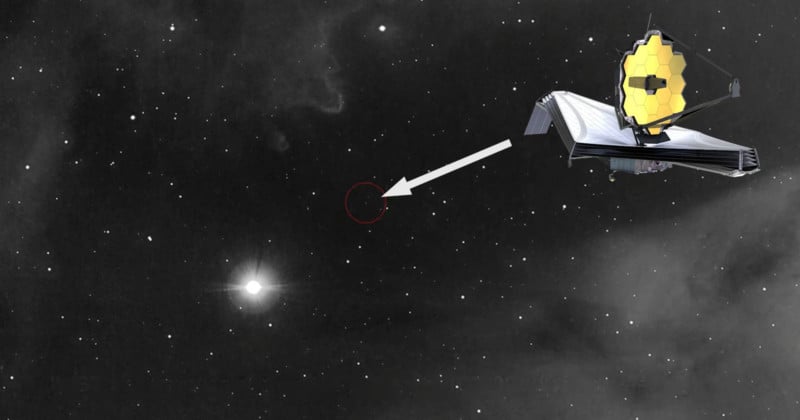Amateur astrophotographer Ethan Gone went out recently to shoot a nebula and ended up creating a time-lapse of the newly-launched James Webb Space Telescope flying through space.
Shooting the Timelapse of the JWST
The photographer writes that he had originally set out with the intention of photographing the North America Nebula and the Rosette Nebula.
While in the field, however, he became curious about whether his equipment was capable of capturing the James Webb Space Telescope, which has been making headlines after its launch on Christmas Day 2021.
“When I found it moving in-between frames, I realize I can make a timelapse video of it moving in the sky,” the photographer writes, “so I scratch my plan of the rest of the night, and make JWST the target of the whole night.”
The photos were shot with a $1,799 Celestron RASA 8 telescope, a $999 ZWO ASI183MM Pro monochrome camera, a $2,268 iOptron CEM40 equatorial mount, and an Astronomik H-alpha 12nm filter.
In the photos captured that night, the JWST is seen flying past a nebula located in the sky near Alnilam, the middle and brightest of the three stars of Orion’s Belt.
“I feel very humbled and emotional watching the small dot flying away, carrying our hope and curiosity, into the dark and cold, yet magnificent universe, so I decide to make a video, in hope of sharing the feelings with more people,” the photographer writes.
After staying the photos the following day, he noticed the nebulosity in the background — it’s a backdrop feature that’s located roughly 1,300 light-years away from Earth.

Once the stacking was complete, he turned the images into the 8K 60fps zoom-in timelapse seen at the top that gives viewers a sense of just how small the telescope is in the night sky.
About the James Webb Space Telescope
The James Webb Space Telescope (JWST) was developed by NASA with the help of the European Space Agency (ESA), and the Canadian Space Agency (CSA), and it was named after NASA administrator James E. Webb. As the successor to the Hubble Space Telescope, the JWST is designed to be the largest, most powerful, and “coolest camera in space” — the onboard instruments operate at about 40-degrees Kelvin or minus 388 degrees Fahrenheit (minus 233 degrees Celcius) — and capture photos of space that have even greater resolution and sensitivity than Hubble.
The telescope was launched into space on December 25th, 2021, and it will allow astronomers to photograph some of the most distant objects and events in the Universe, including scenes from way back in time when the first galaxies were taking shape.
Compared to the Hubble Space Telescope, which measures 43×14 feet (13.2×4.2m), the James Webb Space Telescope measures 66.26×46.46 feet (20.2×14.2m).

With scientists around the world clamoring for observation time with the JWST, the telescope will be quite busy — about 10,000 hours of observation time has already been scheduled for its first year of operation, with the excess hours — there are only 8,760 hours in a year — booked to account for unexpected issues that may arise.
Astrophotographers interested in seeing and capturing the JWST can find its position in the sky from any location on Earth using tools such as Unistellar’s online Moving Target Ephemerides.
